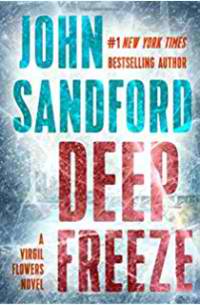The Midnight Line by Lee Child
 Wednesday, October 11, 2017 at 7:57AM
Wednesday, October 11, 2017 at 7:57AM 
Published by Random House/Delacorte Press on Nov. 7, 2017
The Midnight Line is the best Reacher novel I’ve read in quite some time. Lee Child always stands out in the crowd of “tough guy” fiction authors, but The Midnight Line stands out because the “tough guy” aspect of the story is underplayed. Instead, Child focuses the story on a serious real-world issue: soldiers who suffer serious injuries in the line of duty, who become addicted to powerful pain medications, and who are then all but abandoned by the government that gave them their problem. Lee illustrates that issue by focusing on one woman’s struggle to make it through each day, which amounts to a struggle to find the opioids she needs to maintain a life she can handle.
Jack Reacher stumbles upon a ring in a pawn shop that was once owned by a female West Point graduate. The pawned ring suggests that the woman encountered some sort of trouble, so Reacher, being Reacher, decides to find her. His first step involves fighting a motorcycle gang. He is, after all, a tough guy, and it is a rule of tough guy novels that tough guy heroes must establish their tough guy credentials at the beginning of every story. Authors of lesser novels do nothing else, but the best writers search for a more compelling storyline than “tough guys are really tough.” Child usually comes through in that regard, although some of his books do it more successfully than others.
Reacher’s next step takes him to Rapid City and to a fellow named Shapiro who is suspected of all sorts of criminal activities by the local police. A private detective from Chicago who specializes in finding missing persons is also keeping an eye on Shapiro. It isn't hard to figure out which missing person the detective is trying to find. Eventually Reacher teams up with the private detective and the missing woman’s sister to look for the woman who belongs to the ring.
Reacher novels are compulsively readable, and this one is no exception. The pace is steady, calm and assured, exactly what a reader should expect from a confident writer. There is action from time to time, but after the fight with the motorcycle gang, this is a novel of anticipation more than action. I like that. With so many mindless tough guy novels on the market, a tough guy who doesn’t feel a constant need to prove his superiority to other tough guys is a welcome change.
The Midnight Line is a compassionate novel. The story is a little sad because for many people, life gets to be a little sad. Life goes where life takes us, and that isn’t always where we want our lives to go, but sad or not, life goes on until it stops. Reacher accepts that, and Child wants the reader to accept it, without all the hokey “make your own destiny” bromides that are so popular in novels and self-help books. When life doesn’t go well, you cope, and if you’re lucky, you cope without being judged and other people still respect your dignity and give you the decent treatment that should come with being human. We could use more of that sort of understanding.
The novel’s only flaw is that a police detective and her computer guy engage in some police work that struck me as fanciful. The method by which they figured out the phone number of a telephone sold by a convenience store and the phone company’s willingness to give the police a voicemail left on that number without a subpoena or warrant both struck me as implausible. But those are minor complaints about a novel that isn’t about police work so much as it is about a person dealing with a problem that she has in common with thousands of others. Child encourages the reader to understand her, and to understand and feel compassion for people like her (not just veterans). Kudos to Child for writing a tough guy novel that displays so much compassion and sensitivity — values that are in short supply, not just in tough guy novels, but in life.
RECOMMENDED



